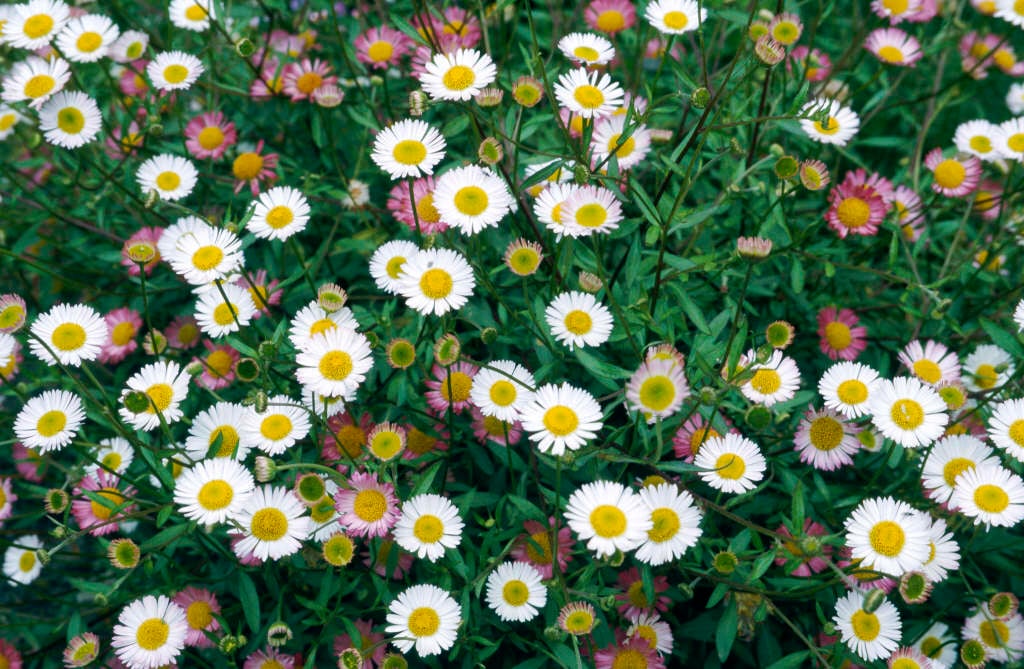Erigeron karvinskianus

Mexican fleabane
A semi-evergreen perennial, forming wide mats to about 15-30cm in height, with wiry branching stems bearing narrow, hairy grey-green leaves. Yellow-centred, daisy-type flower-heads 15mm in width, open white but soon turn pinkish-purple, during the summer
Size
Ultimate height
0.1–0.5 metresTime to ultimate height
2–5 yearsUltimate spread
0.5–1 metresGrowing conditions
Moisture
Well–drainedpH
Acid, Alkaline, NeutralColour & scent
| Stem | Flower | Foliage | Fruit | |
| Spring | Green | |||
|---|---|---|---|---|
| Summer | Pink Purple White | Green | ||
| Autumn | Green | |||
| Winter |
Position
- Full sun
Aspect
West–facing or South–facing or East–facing
Exposure
Exposed Hardiness
H5Botanical details
- Family
- Asteraceae
- Native to GB / Ireland
- No
- Foliage
- Semi evergreen
- Habit
- Matforming
- Genus
Erigeron can be annuals, biennials or perennials with simple or lobed leaves, and daisy-like flowers with many slender rays, appearing over a long period in summer
- Name status
Correct
- Plant range
- Mexico to Venezuela
How to grow
Cultivation
Grows well in a wide range of conditions, from poor to fertile soils. It is drought tolerant, although it will produce a larger mound of foliage and flowers if it doesn't dry out for long periods in summer. It thrives in full sun, but will tolerate some shade.
Propagation
Propagate by seed in pots in a cold frame in spring
Suggested planting locations and garden types
- Coastal
- Rock garden
- Cottage and informal garden
- Gravel garden
- City and courtyard gardens
- Patio and container plants
- Wildlife gardens
- Garden edging
- Flower borders and beds
- Banks and slopes
- Underplanting of roses and shrubs
Pruning
Cut back to new shoots close to ground level in early spring. There is no need to deadhead
Pests
Generally pest-free
Diseases
Generally disease-free
Get involved
The Royal Horticultural Society is the UK’s leading gardening charity. We aim to enrich everyone’s life through plants, and make the UK a greener and more beautiful place.
